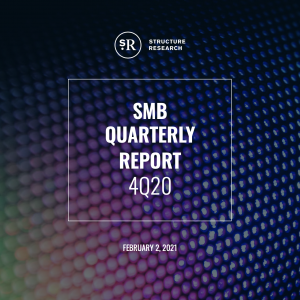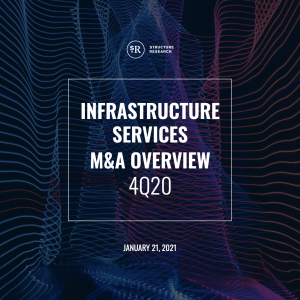Executive Summary
The COVID-19 pandemic caused the global economy to crater and the infrastructure services sector was right in the crosshairs.
The signs were there earlier in the year that the sector would be resilient and even benefit from the pandemic. With a full quarter of exposure to the sector, things have come into clearer focus. The sector’s fundamentals have indeed proved to be durable. Locked in customer contracts and the natural inertia of built-in growth have always been there, and in a pandemic world, this has proven to be all the more critical. Providers have a baseline they are unlikely to fall below and
the pandemic has opened up opportunities for additional installed growth as organizations support remote workforces and move more business processes online. There has also been tangible movement in IT departments towards accelerating outsourcing initiatives and finding more operating efficiencies. The cloud and data centre are clear and obvious answers to these problems.
But the wider macroeconomic pain has not left the sector completely unscathed. Cloud and infrastructure have benefited from the shift of so many facets of life to the Internet, but there are many heavily impacted industries that are stalling the sector’s growth. The pandemic driven benefits are pushing things forward, but a lot of that growth is merely offsetting the weakness that is out there. The benefits of the pandemic are still real and likely to be felt more deeply over the long-term. For now, things are going to be rocky and a bit unpredictable.
Despite everything, the pandemic has not changed a number of trajectories already in motion. Europe continues to be the next frontier of growth for hyperscale, managed third party cloud services continue to expand and MSPs and hyperscale cloud platforms are building
new products and services for specialized verticals and targeted use cases like HPC. Meanwhile, the edge continues to evolve even as the pandemic creates unforeseen challenges for a model that is still figuring out the details of logistics, supply chains and operations. But edge providers are not wasting time. They are adapting, experimenting with new models and succeeding in attracting investment capital. Edge is also evolving at other levels. A number of edge markets saw meaningful activity in the recent quarter and deployment sizes are pushing the envelope and creating a new category of edge-hyperscale.
The global pandemic, needless to say, will shake up the global economy over the next several years. Life will in many ways have become completely altered. But there will be one common denominator: life and business will move online and it will require Internet infrastructure.






